Erin Roberts
Writer and Game Designer
Highlights
Ember: An Online Roleplaying Game
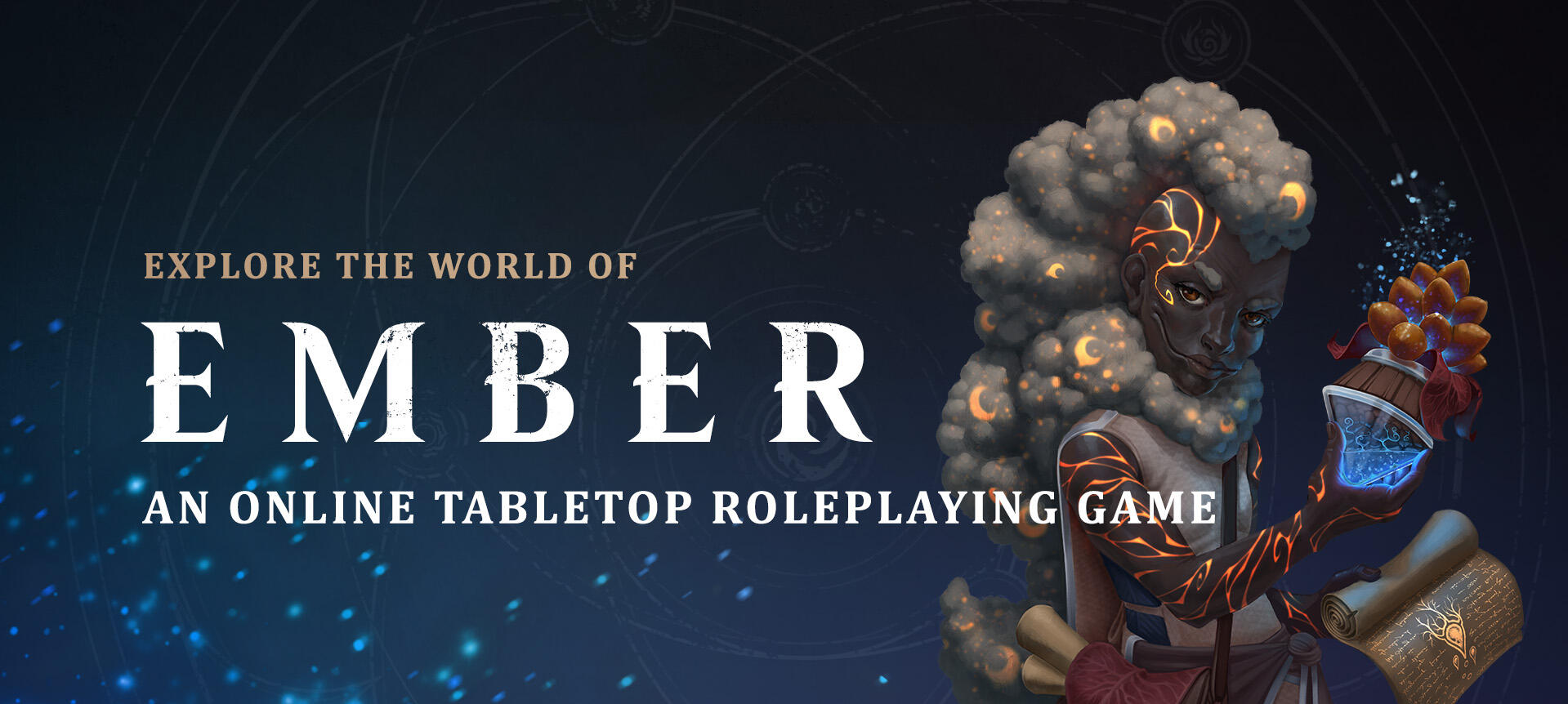
Ember is a cutting-edge digital roleplaying experience designed for Foundry Virtual Tabletop. It blends the immersive audio, open-world exploration, and tracked play of video games with the guided storytelling and flexible exploration of a traditional tabletop roleplaying game. As one of the primary writers on the project, I develop locations, NPCs, monsters, quest events, and gameplay mechanics for a campaign that spans 25,000 hexes and is designed to deliver years of gameplay.
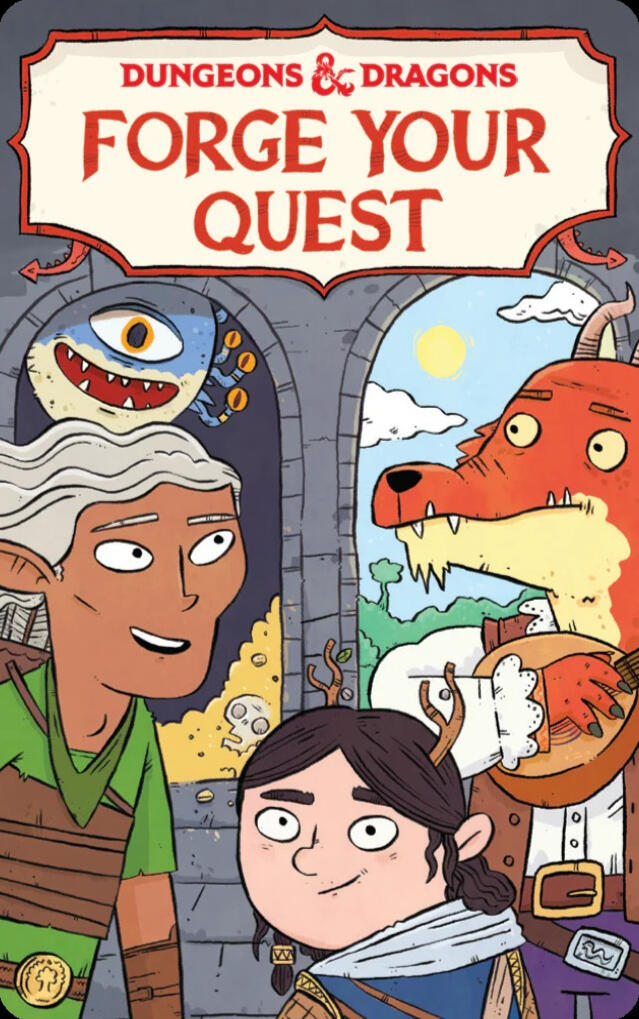
Dungeons & Dragons: Forge Your Quest
This fully-voiced interactive audio adventure for Yoto Players gives kids 8 & up the opportunity to choose their path through an adventure in (and below) the streets of Waterdeep - they can choose to be a fighter or a wizard, which path to go down, and how to get past the challenges they face along with their party of new friends.I had SO much fun working on this project, from designing the interactivity and series of choices to writing the script to getting to listen in as the actors, producers, and amazing team at Yoto brought it to life! We even made a coloring map and character sheets for the characters!
Journeys Through The Radiant Citadel
Godsbreath Gazetteer
Written In Blood
Setting & Adventure, Wizards of the Coast
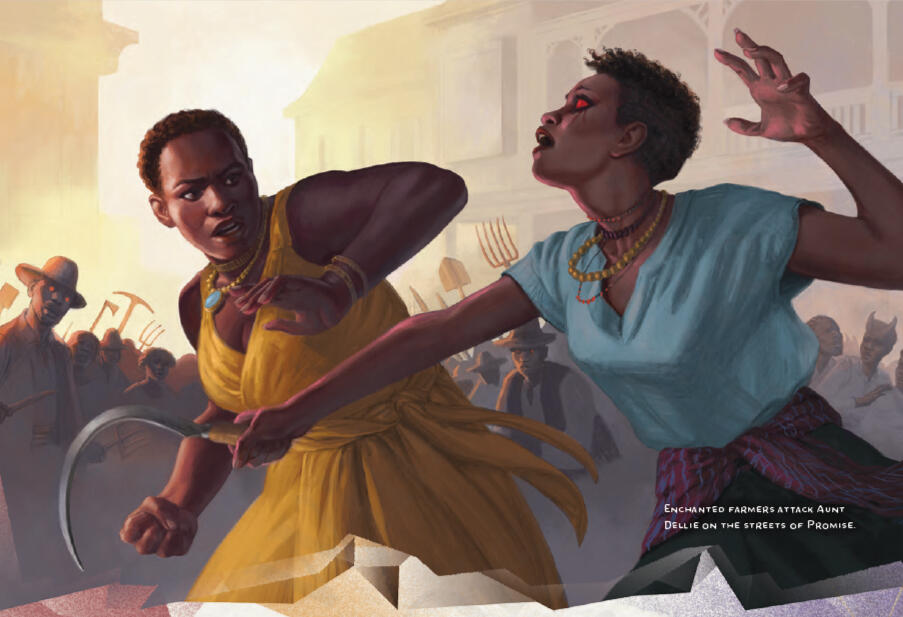
Silver ENNIE Award Winner, Best Adventure
Finalist, Nebula Award for Best Game Writing
Diana Jones Award Finalist
This adventure compilation from Wizards of the Coast featured locations and adventures inspired by non-Western cultures and lived experiences. I drew from my family's history in the Southern USA (including my great-uncle's book Growing Up Black in Rural Mississippi) to create a non-hierarchical agricultural community called Godsbreath who work together to survive and thrive even as their land slowly grows barren and wrote an adventure in that location, Written in Blood, that features a secret from the past and a journey to the dangerous outskirts of the city.In addition to this official Wizards of the Coast content, I worked with a group of other writers from the project on a supplement, Journeys Beyond the Radiant Citadel, where I expanded on Godsbreath, including adding more information about its religious practices by detailing the Godsbreath gods and the Proclaimers who share their message.
Opening Gazetteer Text
Generations ago, a land was plundered by enemies whose names are lost to time. Five gods came together to save as many of the land’s beleaguered inhabitants as they could by taking them to a new home. Those the gods saved named their new land Godsbreath, in honor of the deities who brought them across a vast sea to a new life. These inhabitants banded together to build strong communities and protect themselves from danger. From one generation to the next, they share stories of their past, of the distant lands of their ancestors, and of the unfulfilled promise of reunion with ancestors left behind in a lost land.In Godsbreath, danger and beauty walk hand in hand. Along the southern coast, the murky, monster-stalked Nightwater Islands support tight-knit communities whose colorful houses perch on stilts. On the mainland, rising from the shore of Nightwater Cove, stands Promise, a town of brightly painted buildings and bustling trade. Northward lies a band of crimson soil known as the Ribbon—the source of this land’s agricultural prosperity—which weaves through woods and floodplains. Beyond the Ribbon spreads the treacherous land of the Rattle, a territory that might hold the key to Godsbreath’s future.
The Vault: Missions for the Triangle Agency
Dead Quiet
Adventure, Haunted Table
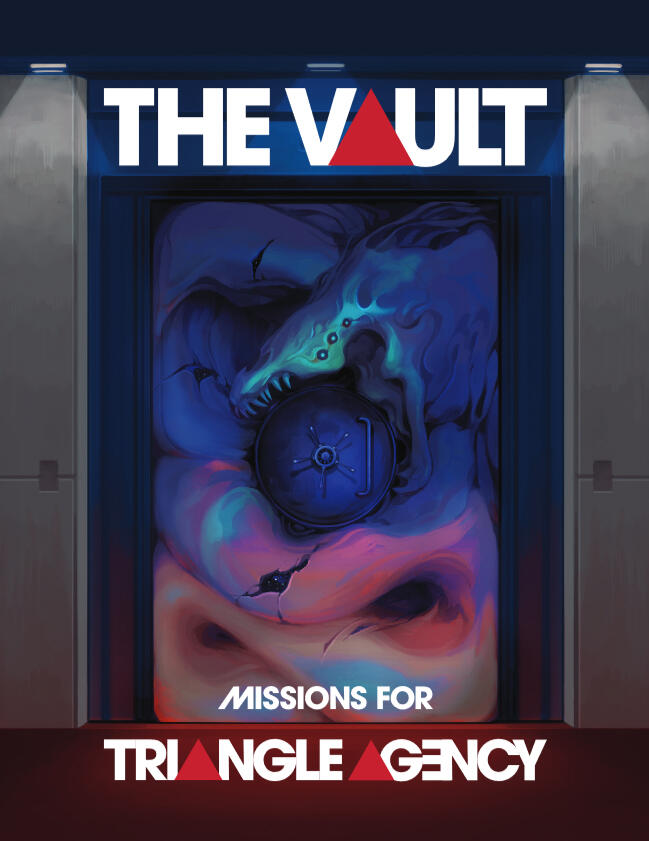
This adventure, designed for the newly-designed system Triangle Agency, gave me the opportunity to address an issue that I care about - gentrification - through an adventure. Inspired by the phrase "The sound of gentrification is silence," I created a monster created by a new resident to an existing community that literally takes the sound from those it sees as disruptive, silencing their hearts and killing them in the process.
In-World Text
A note in precisely lettered handwriting on high-quality linen paper can be found throughout Caddy Corner. It reads:Dear Neighbors:
I know many of you are also concerned about the nightly disturbances in this neighborhood. I am sure you are all hard-working people who wish to sleep at night without constant interruptions from those who cannot respect the peace of those around them. If you are interested in learning more about the newly formed Concerned Citizens of Caddy Corner, please reach out to me by leaving a note in my mailbox at 227 Ashran Place. Tranquility now!
-Kaye Renfield
---
The letters on Kaye’s dining table are all addressed to local news outlets and politicians, asking for something to be done about all the late-night noise in Caddy Corner. There are also several notes that have been written and sit next to a roll of masking tape, ready to be delivered to neighbors.Note 1: I have heard your dog barking again at night. If you could control it, I would appreciate it. I am trying to rest.Note 2: City ordinances clearly state that excessive noise should end by 10 PM and yet your Friday Night Grooves party does not even begin until nearly 11 PM. I can send you a copy of the regulations, if needed.Note 3: I understand that the Laundrocade is open 24 hours, but your customers are making an inordinate amount of noise going back and forth. Is this necessary?
Thanks for the Memories

Thanks for the Memories is a short piece of interactive fiction, written in the narrative scripting language ink, that puts players in the shoes of a woman who has woken up without her memories. Her only companion is a Siri-like assistant who is willing to sell memories back to her, which may be the only way that she can find someone to help her. The narrative is non-linear, with players able to experience memories in any order they desire, but includes themes of self-acceptance and the power of memory to shape our understanding of the world around us.
Opening Text of a Memory within the Game
Ana-Maria was 110% right – everything is better with more mango tequila. Forget Aunt Lisa’s threats or how we’re gonna afford our own place. Right now beat’s under my skin and light’s pulsing everywhere. Feel how fun it is, how I'm having a wonderful time. And this is such a good drink.Everybody who drinks BOHEMIAN SUNSET is gonna feel just as good as I do right now. They're on sale this week, I hear. 20% off.“Hey, you’re JJ, right? I’ve seen your captures.” My first real fan! Kind of guy Aunt Lisa would love – broad-shouldered and dark-haired and white but not too pale. Nod, smile, stick my ass out a little, project cool. I'm a sexy woman - Marcus says so.“I am. And tonight I'm drinking BOHEMIAN SUNSET.”
Magic For The People
Characters, Mechanics, and Setting Information
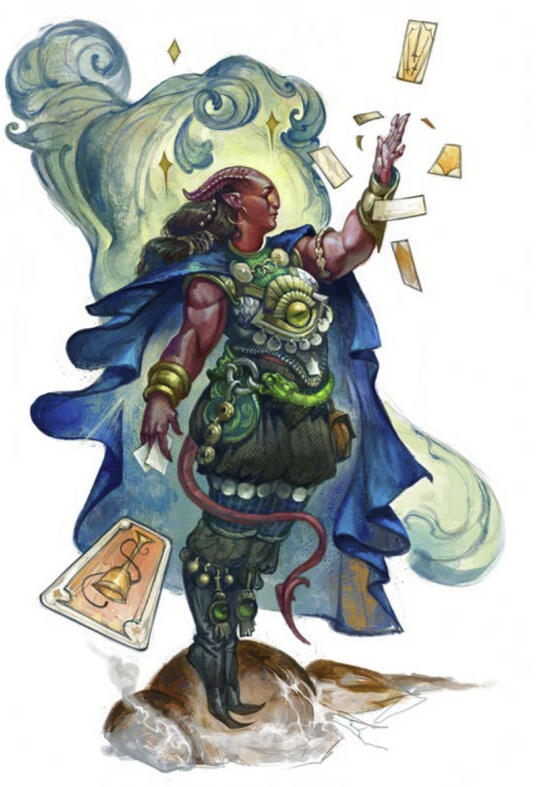
I pitched Magic for the People to Arcadia Magazine as an exploration of folk magic within Dungeons & Dragons and similar tabletop roleplaying games, which often focus on high-level spells. Folk magic is such a ubiquitous part of culture around the world that I wanted to bring it to players and gamemasters as a tool to make their own worlds deeper and more complex.Using the narrative framing of a group called the Thread, a loose organization of folk magic practitioners who seek out and help those in need, Magic for the People creates three distinct sub-specialties of folk magic: craft magic, which focuses on items and potions; fortune telling, which attempts to predict and change the future; and heartwork, in which the ancestors are called upon to intervene in the world of the living.
Craft Magic Introduction & Sample Item
Practitioners of craft magic create magic items for everyday use, typically using easily accessible materials. This is the most common type of folk magic, and it can take many forms, including potions, poultices, and charms. In some traditions and for some items, simply possessing the item is enough to feel its effects, but often craft magic items include specific activation words and rules for use, from time of day to physical placement on the body or in the home.
---
Evil's Bane
Vessel: A small cloth bag, glass bottle, or clear jar
Materials: The leaves of a plant with natural defenses (such as a stinging nettle or a venus flytrap), powdered silver worth 50 gp, a large handful of rice or sand, each grain of which has been counted by the preparer over the course of an hour
Activation: After 2 hours of focused preparation, which must begin at midnight on a clear night, physically attach the vessel with materials to an item at least 5 feet above the ground and sit beneath it, unmoving, until dawn. While you sit unmoving, you may rest. If evil’s bane is moved after activation, it becomes inert.This small bag or bottle, usually hung from a high place in a home or place of business, repels negative or evil energy that attempts to enter the location it guards. Once activated, an evil’s bane wards a 30-foot-radius sphere centered on itself. Each Undead or evil-aligned creature in the area is outlined in a faint glowing yellow light and has disadvantage on attack rolls. A creature in the area
who is charmed or frightened by an Undead or an evil-aligned creature is no longer charmed or frightened and can’t be charmed or frightened by such creatures. Every 24 hours from the time of activation, the area protected by an evil’s bane decreases, losing 5 feet from its radius. After 6 days, the evil’s bane loses its magic and becomes inert.
Interstellar Species
Game Rules & Setting
Envoy Options, Guides, Vlaka
Paizo
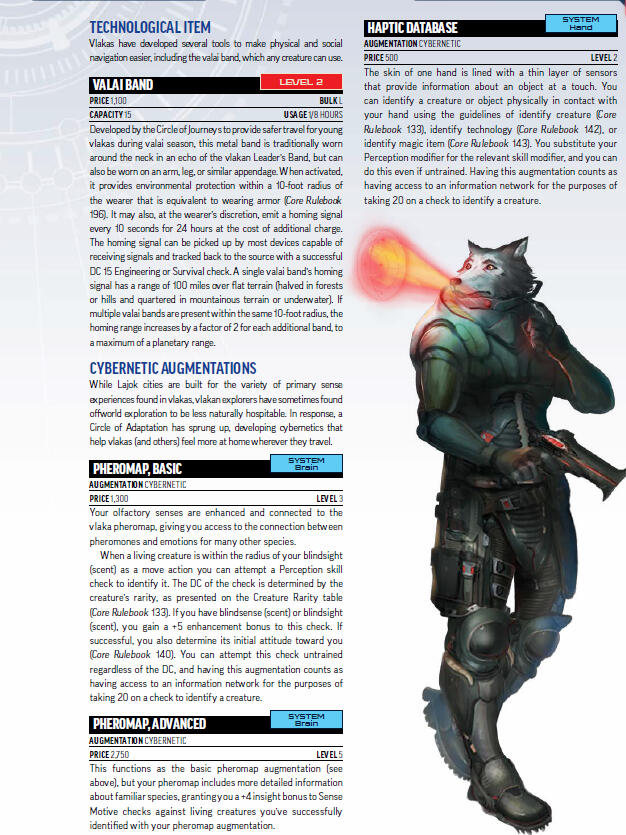
Interstellar Species gave me the opportunity to go in-depth in building up the backstory and culture of the Vlaka, a species of sentient wolflike creatures. The Vlaka, long part of the Starfinder setting, have always been depicted as having a large deaf population and blind population, with each accounting for approximately one-third of the total population. When asked to expand on their origin planet and cultural practices, I did extensive research into how a society whose members have widespread differences in sensory experience might develop.
Vlaka Communication
Vlakan communication has been shaped by the fact that vlakas may be deaf, blind, deafblind, or hearing/sighted, and thus it uses multiple senses whenever possible. Traditional written Vlakan is grooved so it can be read by touch as well as sight—in an era of technology, this grooving is replicated on haptic touchscreens and often supplemented with audio description. Vlakan sign language has two variants, visual and tactile, with the touch-based variant dominating within close circles and other intimate settings. The visual variant is used for more formal group occasions, where vocal description can be provided for the blind. Most vlakas, especially if raised on Lajok, sign and speak simultaneously and interchangeably. Those who explore with mostly non-vlakan crews sometimes even teach a variant of basic signed Vlakan to their crewmates once they feel they have formed an intimate enough circle.Item: Haptic Database
The skin of one hand is lined with a thin layer of sensors that provide information about an object at a touch. You can identify a creature or object physically in contact with your hand using the guidelines of identify creature, identify technology, or identify magic item. You substitute your Perception modifier for the relevant skill modifier, and you can do this even if untrained. Having this augmentation counts as having access to an information network for the purposes of taking 20 on a check to identify a creature.
Lost Omens: Travel Guide
Setting Information
Art & Architecture
Time and the Calendar
Paizo
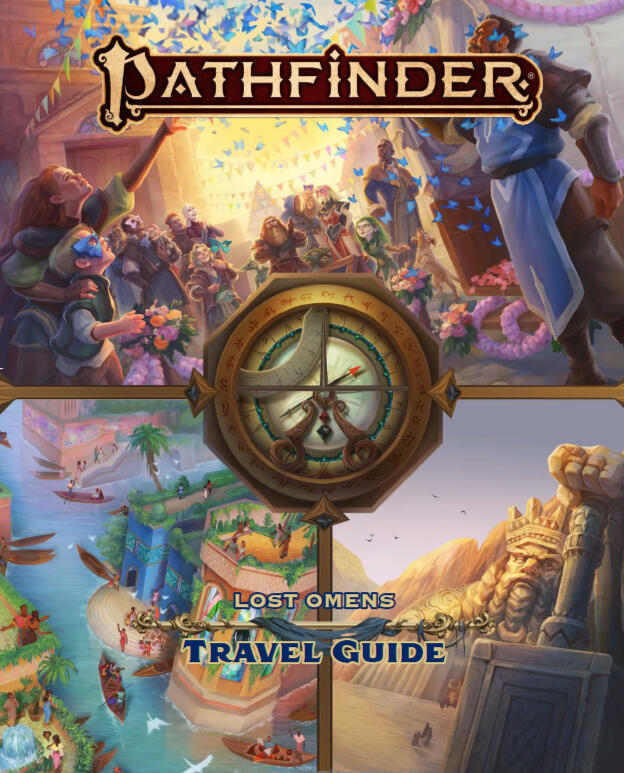
This book shares information about the setting of the Pathfinder tabletop roleplaying game, Golarion, through the eyes of those who live within it. In creating the time & calendar section, written by a retired assassin, I paid special attention to making sure that each region and culture's time-keeping practices were given equal respect and reverence.
Time and the Calendar Intro
Golarion has as many sayings about time as it has ways of measuring it, but my favorite has always been “time to kill.” After all, until my recent retirement from the Ladies of Shadow tea and assassination guild, I’ve always meant it quite literally. Luckily, my work gave me more than a gift for conversation and some pesky bounties on my head—I also have a special appreciation for the importance of time. How can you not love something so precious that running out of it is the end, but so meaningless that we can’t help wasting it? Time is always shifting, impossible to hold onto. One instant can be an eternity, the next a flash; one day stands still while the next rushes by. While no two of us experience it quite the same way, I think we can all agree: time is something worth keeping track of.Goblin Time-Keeping
As goblins’ general distrust of the written word extends to clocks and calendars, most goblin time-keeping is tied either to fire or song. Goblin
embersongs, traditionally sung around a dying fire, differ in tune and lyric from region to region, but each follows a precise rhythm that makes them excellent measures of time. In western Varisia, for example, asking a goblin to cause a distraction three “All’s Aglow” choruses from now is precise enough to set any clock to. While embersongs are generally used for shorter periods of time, the length of fires measure longer spans, helped by goblin communities’ typically skillful fire management. Common measures include cookfire (2–3 hours), nightfire (6–8 hours), and blaze (2–3 days). While these are consistent in local communities, they differ between regions, with frost goblin measures tending to be the longest.
Full Credits

Games & Interactive fiction
Anansi's Tapestry of Lives, Neverending ("Xarietta Flinn," "Cintoran")
Apocalypse: The Complete Game Master's Guide to Ending the World, Neverending ("The Graveyard of the Gods")
ARCADIA 30, MCDM ("Magic For The People")
Candela Obscura Core Rulebook, Darrington Press (Cultural Consulting)
Chefs de Partie, Taylor Navarro ("A Plateful of Luck")
Daggerheart, Darrington Press (Cultural Consulting & Writing)
Deathmatch Island, Old Dog Games and Evil Hat Productions ("Folk Island")
Dragonlance: Shadow of the Dragon Queen, Wizards of the Coast ("Features of the Northern Wastes," "Heart's Hollow")
Fables: Agents of the Empire, Ghostfire Gaming ("Karalagne Empire Setting", "Planebreaker")
Horizons 1, Wildmage Press ("Next Stop: Adventure")
Hunter: The Reckoning 5th Edition, World of Darkness ("Whatsisname", "Johnny Sweets", "Order of the Rose", "Re:Venge")
Journeys Beyond the Radiant Citadel, DM's Guild ("Godsbreath Gazetteer")
Journeys Through the Radiant Citadel, Wizards of the Coast ("Written In Blood")
Lost Omens: Firebrands, Paizo ("Saltbreakers," "Shimali Manux, Vulmia Manux")
Lost Omens: Highhelm, Paizo ("Stonebreach & Stonebreach Options")
Lost Omens: Knights of Lastwall , Paizo ("Buttons & Fen Tunwalker," "Milani")
Lost Omens: The Grand Bazaar , Paizo ("Relics & Remembrance," "Empowered Cuisine")
Lost Omens: Travel Guide, Paizo ("Time & the Calendar," "Art & Architecture")
Moonlight on Roseville Beach, R. Rook Studio (Microfiction)
NaughtyBits (Strange Horizons): Note: This work was commissioned as part of the Strange Lusts interactive fiction issue of Strange Horizons and contains mature themes and language.
O Captain Crew Expansion , Scott Bullock & Leon Barillaro ("Tellus the Lost")
Starfinder Interstellar Species, Paizo ("Envoy Improvisations & Talents," "Guides," "Vlaka")
Thanks For The Memories (Sub-Q Magazine)
The Rakshasa's Court, Paizo
The Vault: Missions for the Triangle Agency, Haunted Table Games ("Dead Quiet")
The Wagadu Chronicles, Twin Drums (Backgrounds)
Vecna: Eve of Ruin Platinum Edition, Beadle & Grimm's ("Palenna's Plight")
Zombies, Run! (Writing Team, Seasons 7 - 10)
Prose Fiction
Honor Thy Mothers (THEN AGAIN: Vintage Photography Reimagined by One Artist and Thirty Writers)
Sour Milk Girls (Clarkesworld Magazine, The Year's Best Dark Fantasy & Horror 2019, The Best Science Fiction of the Year: Volume 4)
Snake Season (The Dark)
The Godsrain Prophecies, Paizo (10 original works of fiction, compiled into an ebook)
Wolfy Things (PodCastle)
Contact Me